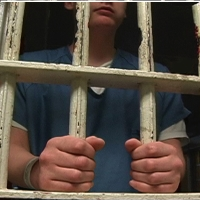Prisoners Shifting to Local Jails with Incentives to Not Rehabilitate Them

California, compelled by the U.S. Supreme Court last year to reduce its prison population, is nine months into the shift of inmates from state facilities to local jails and just beginning to gauge the ramifications.
As low-level offenders are shifted to county facilities, the hope is that a combination of rehabilitation, early release of non-threatening inmates and incarceration of fewer people who are simply awaiting trial but not convicted of a crime would prevent the Supreme Court from having to review overcrowding in county jails down the road.
Research analyst Priscilla Hamilton at the Milken Institute says that, for now, don’t count on help from rehabilitation. The realignment legislation uses a funding formula, she says, that offers incentives for counties to hang on to their prisoners rather than rehabilitate them. Sixty percent of state funding is based on the number of low-level offenders the county historically sent to state prisons. Thirty percent is based on county population and a meager 10% encourages rehabilitation and a reduction of recidivism.
In other words, it is in the county’s best interest to downplay rehabilitation if it wants to keep its funding levels up.
Hamilton considers this a lost opportunity to get serious about rehabilitation programs because four of the five top offenses with the highest recidivism rate—vehicle theft, receiving stolen property, petty theft with prior and drug possession—are the type of low-level crimes that county jails deal with.
In a country with 5% of the world’s population but 25% of its incarcerated bodies, it is not surprising that California—a state with a fondness for three-strike laws and stiff criminal penalties—would find its fastest growing expense isn’t education, transportation, parks or health care. It is prisons.
In April 2011, Governor Jerry Brown signed Assembly Bill 109, which realigned the corrections system by shifting custody of 20,000 low-level felons from state prisons to local jails. A month later the U.S. Supreme Court ordered California to reduce its prison population by 33,000 within two years.
Realignment took effect in October 2011 and counties began supervision of prisoners placed on parole whose last offense was not a violent crime or a sex offense, and newly convicted offenders considered non-violent, non-serious and non-sex offenders who will be on probation or in local jails in lieu of sentences to state prison.
The total population in the state's 33 prisons has fallen by 16% to 120,946 from 144,138 days before realignment began, according to the state Department of Corrections and Rehabilitation.
The 58 counties vary widely in their ability to house new prisoners, but ready or not here they come. While some counties have empty beds and rehabilitation programs in place, others do not and wonder what they’ll do with the overflow.
The American Civil Liberties Union (ACLU) of California suggested in a study released in March that jails already have a pressure-release valve available to them. On any given day, about 71% of the 71,000 Californians sitting in county jails had not been convicted of anything. They were just awaiting trial.
Instead of paying $100 a day to house one, why not pay $2.50 a day to monitor him?
–Ken Broder
To Learn More:
California POV: Prison Realignment Incentivizes Incarceration, not Rehabilitation (by Priscilla Hamilton, Milken Institute)
After Voters Reject Property Tax Increase, Oregon County Releases Prisoners (by Matt Bewig, AllGov)
Realignment Overview (CalRealignment)
The Challenges of “Realignment” (The Economist)
Jail Shift Makes Waves in California (by Vauhini Vara, Wall Street Journal)
Sheriff Looks to Central Valley to Hold L.A. County Jail Overflow (by Andrew Blankstein and Jason Song, Los Angeles Times)
ACLU Is Critical of State Prison Realignment (by Chris Megerian, Los Angeles Times)
- Top Stories
- Controversies
- Where is the Money Going?
- California and the Nation
- Appointments and Resignations
- Unusual News
- Latest News
- California Forbids U.S. Immigration Agents from Pretending to be Police
- California Lawmakers Urged to Strip “Self-Dealing” Tax Board of Its Duties
- Big Oil’s Grip on California
- Santa Cruz Police See Homeland Security Betrayal in Use of Gang Roundup as Cover for Immigration Raid
- Oil Companies Face Deadline to Stop Polluting California Groundwater





